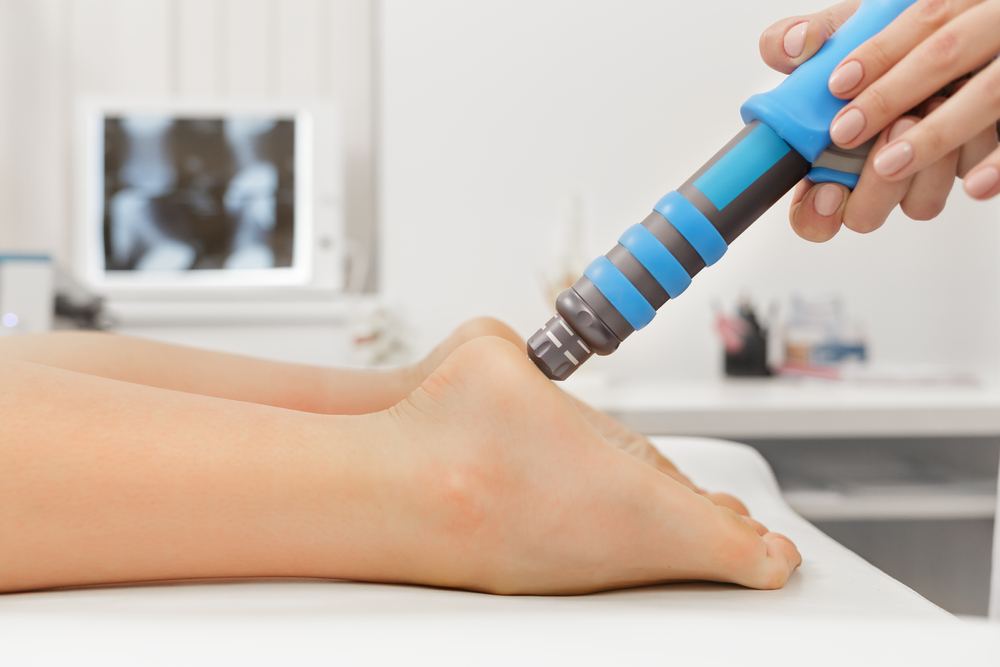Extracorporeal Pulse Activation Technology (EPAT) has carved a significant niche in various medical fields, offering an innovative approach to pain management and tissue regeneration. Its evolution from initial use to its current diverse applications reflects a growing interest in non-invasive therapeutic modalities. However, the medical landscape is dynamic, and alternative therapies like SoftWave therapy, potentially offering equal or superior efficacy, merit exploration.
- What is EPAT Shockwave Therapy?
- Efficacy of EPAT in Clinical Practice
- Practical Applications in Medicine: SoftWave and Shockwave in Different Specialties
- SoftWave Therapy
- High-Intensity Focused Ultrasound (HIFU)
- Radiofrequency Therapy
- Which Shockwave Therapy is Best for Your Clinic?
- Why Choose SoftWave Technology for Your Clinic
What is EPAT Shockwave Therapy?
EPAT, or Extracorporeal Pulse Activation Technology, is a non-invasive treatment modality that utilizes pressure waves to stimulate metabolism, enhance blood circulation, and accelerate the healing process. The mechanism of action of EPAT involves the delivery of acoustic pneumatic pulses into the affected areas, triggering biological responses that facilitate tissue repair and regeneration. Unlike other forms of shockwave therapy that use electric impulses, EPAT is distinguished by its use of compressed air and kinetic energy to create radial pressure waves.
Comparatively, EPAT has certain advantages and limitations. Notably, EPAT treatment usually necessitates the use of local anesthesia or numbing creams due to its intensity. This contrasts with Broad-Focused Extracorporeal Shock Wave Therapy (Li-ESWT) specifically SoftWave Therapy, which generally doesn’t require anesthesia and offers broader and deeper tissue penetration. Studies and research support that EPAT has been used effectively for:
- Achilles tendinopathy
- Tennis elbow (lateral epicondylitis)
- Shoulder tendinitis
- Jumper’s knee (patellar tendinopathy)
- Myofascial trigger points in chronic muscular pain
Efficacy of EPAT in Clinical Practice
Clinical trials and research studies provide a solid foundation for evaluating the efficacy of EPAT in various medical conditions. For instance, a study on Achilles tendinopathy demonstrated a significant improvement in 78.38% of tendons treated with EPAT. This included a diverse range of tendinopathies, with notable improvement in the Roles and Maudsley score, indicating EPAT’s effectiveness in managing this condition. Similarly, research on plantar fasciitis showed that EPAT could effectively reduce the thickness of the plantar fascia and patient-reported pain over a long-term follow-up period. Additionally, EPAT has shown promising results in the management of cellulite, with improvements in skin structure and elasticity noted. These studies underscore EPAT’s potential as a safe and effective treatment modality. However, it’s important to recognize the limitations and scope of current research, which necessitates further studies to fully understand EPAT’s long-term efficacy and broader applicability.
Practical Applications in Medicine: SoftWave and Shockwave in Different Specialties
EPAT is a significant therapy, but various alternatives offer specific benefits in certain clinical scenarios.
SoftWave Therapy
SoftWave Therapy, utilizing patented technology, offers a non-invasive approach that employs low-energy shockwaves to activate the body’s natural healing process. Distinguished by its ability to penetrate tissue widely and deeply (7cm x 12cm), Medical Doctors have implemented this device for use regarding joint and muscle pain, plantar fasciitis, achilles tendonitis, and various orthopedic issues, along with ulcers, wounds, burns, and neuropathies, without the need for anesthesia.
Read more additional resources and studies
High-Intensity Focused Ultrasound (HIFU)
HIFU is particularly effective in urology for targeted tissue ablation, especially in prostate treatments. It utilizes high-energy sound waves focused on a small area, allowing precise treatment of localized tissue while preserving surrounding areas. This method is valuable for its accuracy and effectiveness in treating specific conditions without invasive surgery.
Radiofrequency Therapy
In orthopedics and pain management, radiofrequency therapy offers a minimally invasive solution. It uses radiofrequency energy to heat tissues, which helps alleviate pain and improve joint function. Commonly used in chronic back pain and arthritic conditions, this therapy provides a viable alternative to more invasive treatments like surgery, particularly for patients seeking pain relief and joint function improvement.
Which Shockwave Therapy is Best for Your Clinic?
When choosing a shockwave therapy device for a clinic, it is crucial to assess various factors to ensure it meets both the clinic’s and the patient’s needs. Key considerations include the efficacy of the device, the range of conditions it can treat, patient comfort during treatment, and its practicality for clinical use. Clinicians should examine each device’s ability to penetrate tissue, the duration of treatments, and the outcomes for patients. While multiple options available, devices like SoftWave Therapy, known for their non-invasive approach and ability to treat a wide spectrum of conditions without anesthesia, should also be considered. These features might make them suitable for clinics looking to offer patient-friendly and effective treatment options.
Why Choose SoftWave Technology for Your Clinic
The exploration of EPAT and its alternatives like SoftWave Therapy highlights a significant shift towards innovative, non-invasive treatment modalities in clinical practice. EPAT has established itself as an effective treatment for a range of conditions, with clinical trials demonstrating its efficacy. However, the evolution of shockwave technology, particularly SoftWave’s patented approach, positions it as a frontrunner in the field. Clinics adopting SoftWave Therapy are not just embracing a treatment option but are also placing themselves at the forefront of innovative patient care. This adoption reflects a commitment to providing the latest, research-backed therapies to patients. For clinics looking to enhance their treatment portfolio with a focus on non-invasive and effective patient care, becoming a SoftWave provider represents a forward-thinking step.
Interested in integrating this cutting-edge technology into your practice? Explore the opportunity to Become a SoftWave Provider Today!

